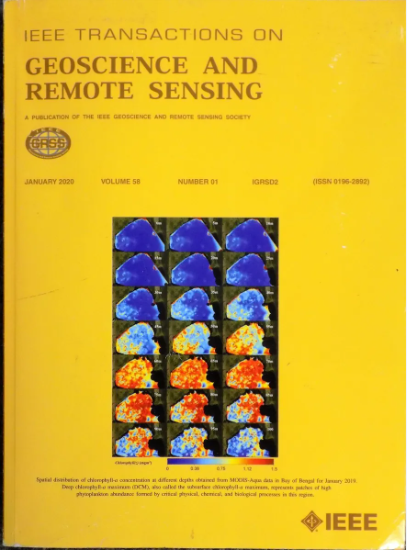用于遥感图像超分辨率的快速采样策略条件扩散模型
IF 7.5
1区 地球科学
Q1 ENGINEERING, ELECTRICAL & ELECTRONIC
IEEE Transactions on Geoscience and Remote Sensing
Pub Date : 2024-09-11
DOI:10.1109/TGRS.2024.3458009
引用次数: 0
摘要
基于深度学习的单幅遥感图像超分辨率(SRSISR)传统方法已取得显著进展。然而,这些方法的超分辨率(SR)输出在视觉质量上还不够令人满意。最近基于扩散模型的生成式深度学习模型能够提高输出图像的视觉质量,但由于其采样效率,这种能力是有限的。在本文中,我们提出了基于条件扩散模型的 SRSISR 方法 FastDiffSR。具体来说,我们设计了一种新颖的采样策略,以减少扩散模型所需的采样步骤,同时确保采样质量。同时,我们还采用了残留图像来降低计算成本,证明了将通道注意力和空间注意力结合起来能进一步提高输出图像的视觉质量。与最先进的(SOTA)基于卷积神经网络(CNN)、基于 GAN 和基于变换器的 SR 方法相比,我们的 FastDiffSR 将学习到的感知图像补丁相似度(LPIPS)提高了 0.1-0.2,并在一些真实世界场景中取得了更好的视觉效果。与现有的基于扩散的 SR 方法相比,我们的 FastDiffSR 在像素级评价指标峰值信噪比(PSNR)上取得了显著改善,同时模型参数更小,在 Vaihingen 数据上获得了更好的 SR 结果,推理时间缩短了 2.8-28 倍,显示了出色的泛化能力和时间效率。我们的代码将在 https://github.com/Meng-333/FastDiffSR 上开源。本文章由计算机程序翻译,如有差异,请以英文原文为准。
A Conditional Diffusion Model With Fast Sampling Strategy for Remote Sensing Image Super-Resolution
Conventional deep learning-based methods for single remote sensing image super-resolution (SRSISR) have made remarkable progress. However, the super-resolution (SR) outputs of these methods are yet to become sufficiently satisfactory in visual quality. Recent diffusion model-based generative deep learning models are capable to enhance the visual quality of output images, but this capability is limited due to their sampling efficiency. In this article, we propose FastDiffSR, an SRSISR method based on a conditional diffusion model. Specifically, we devise a novel sampling strategy to reduce the number of sampling steps required by the diffusion model while ensuring the sampling quality. Meanwhile, the residual image is adopted to reduce computational costs, demonstrating that integrating channel attention and spatial attention begets a further improvement in the visual quality of output images. Compared to the state-of-the-art (SOTA) convolutional neural network (CNN)-based, GAN-based, and Transformer-based SR methods, our FastDiffSR improves the learned perceptual image patch similarity (LPIPS) by 0.1–0.2 and achieves better visual results in some real-world scenes. Compared with existing diffusion-based SR methods, our FastDiffSR achieves significant improvements in pixel-level evaluation metric peak signal-noise ratio (PSNR) while having smaller model parameters and obtaining better SR results on Vaihingen data with faster inference time by 2.8–28 times, showing excellent generalization ability and time efficiency. Our code will be open source at
https://github.com/Meng-333/FastDiffSR
.
求助全文
通过发布文献求助,成功后即可免费获取论文全文。
去求助
来源期刊

IEEE Transactions on Geoscience and Remote Sensing
工程技术-地球化学与地球物理
CiteScore
11.50
自引率
28.00%
发文量
1912
审稿时长
4.0 months
期刊介绍:
IEEE Transactions on Geoscience and Remote Sensing (TGRS) is a monthly publication that focuses on the theory, concepts, and techniques of science and engineering as applied to sensing the land, oceans, atmosphere, and space; and the processing, interpretation, and dissemination of this information.
 求助内容:
求助内容: 应助结果提醒方式:
应助结果提醒方式:


